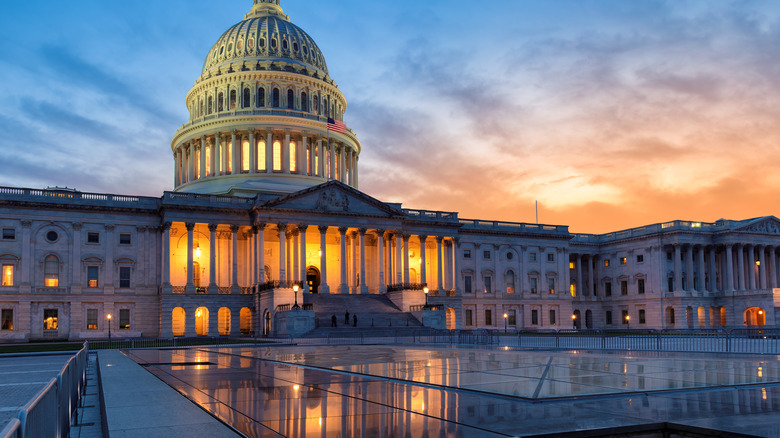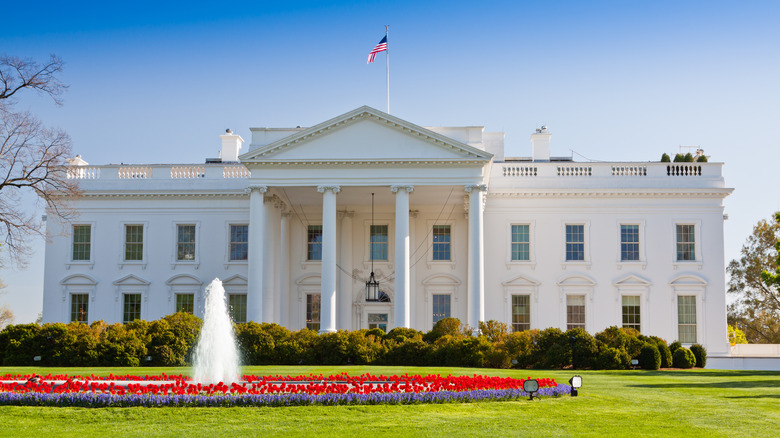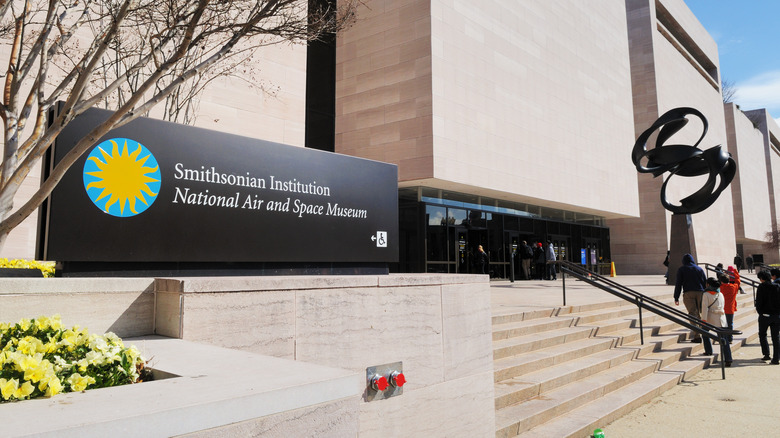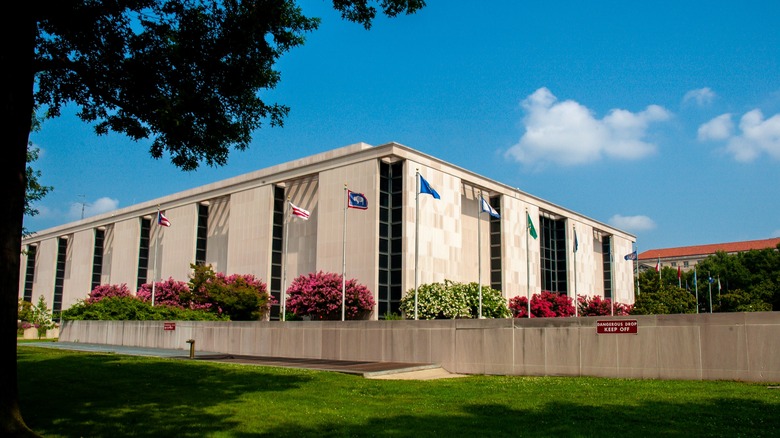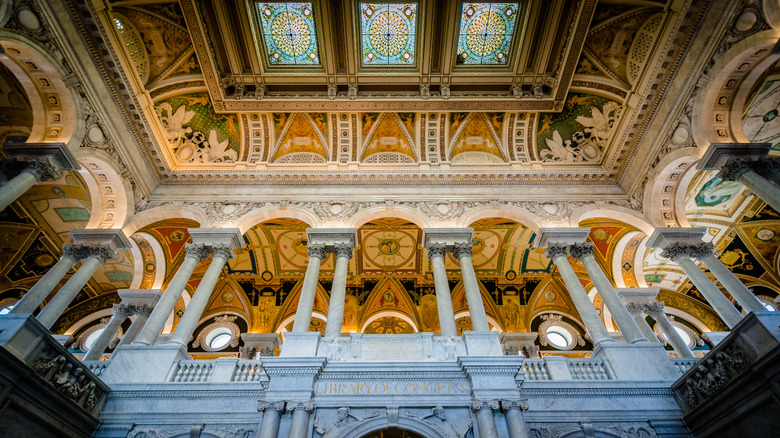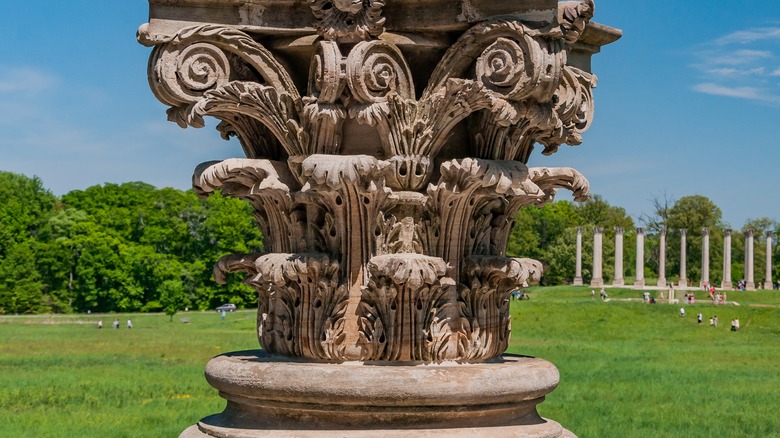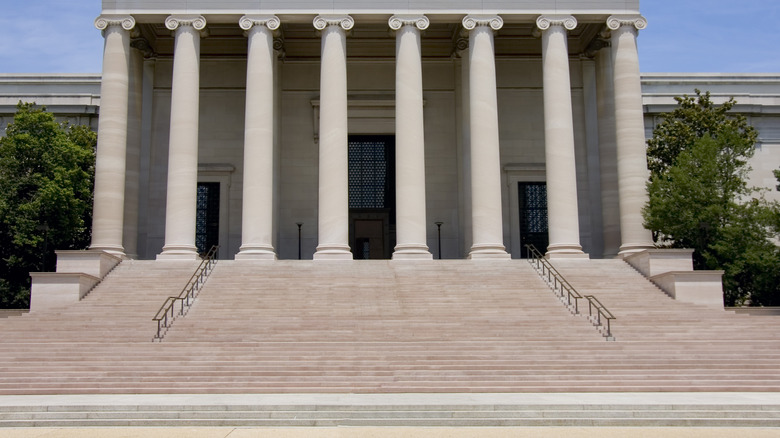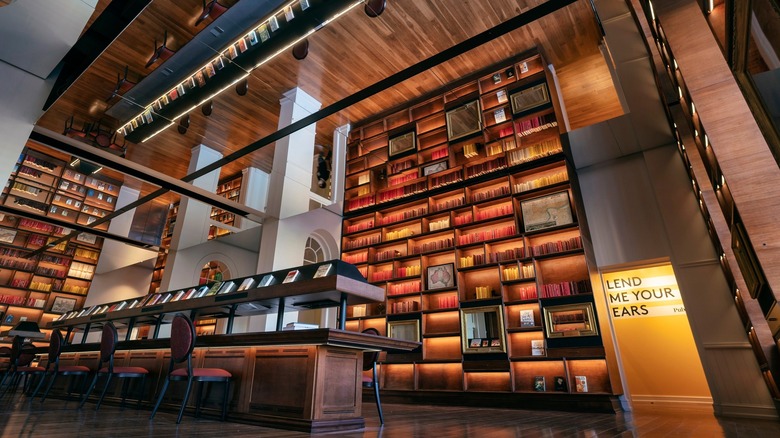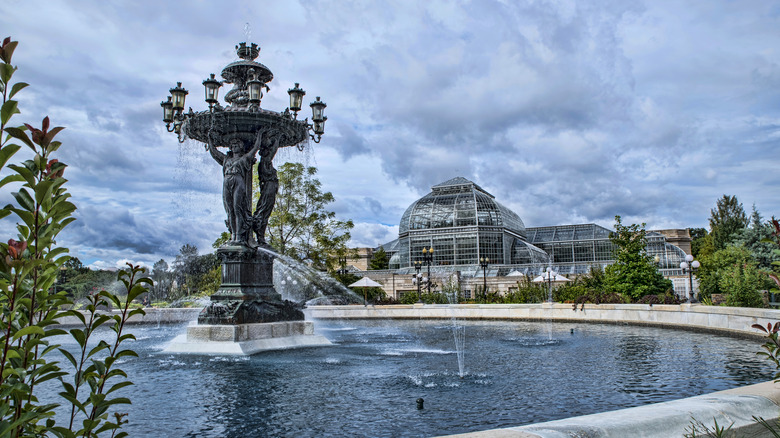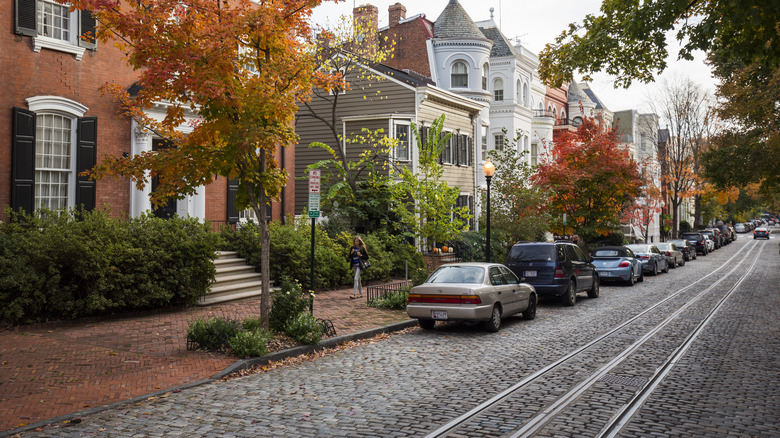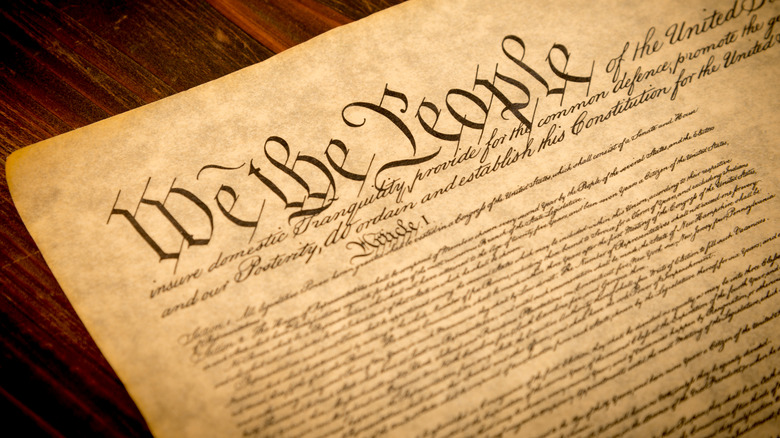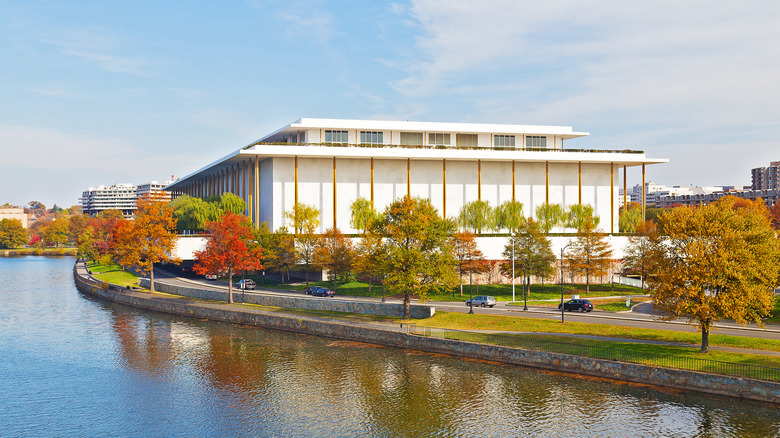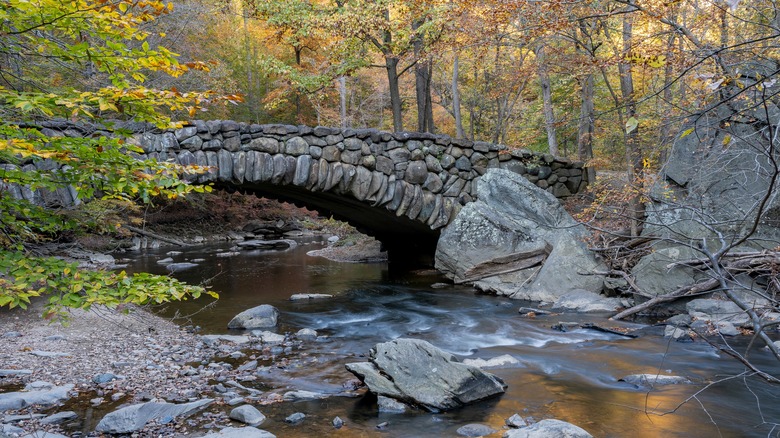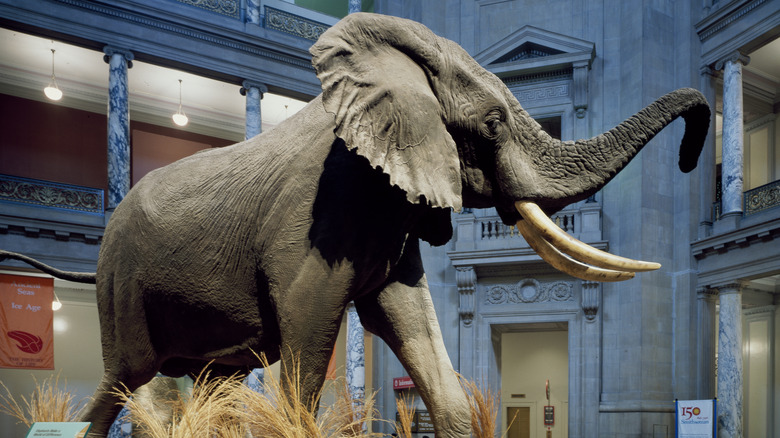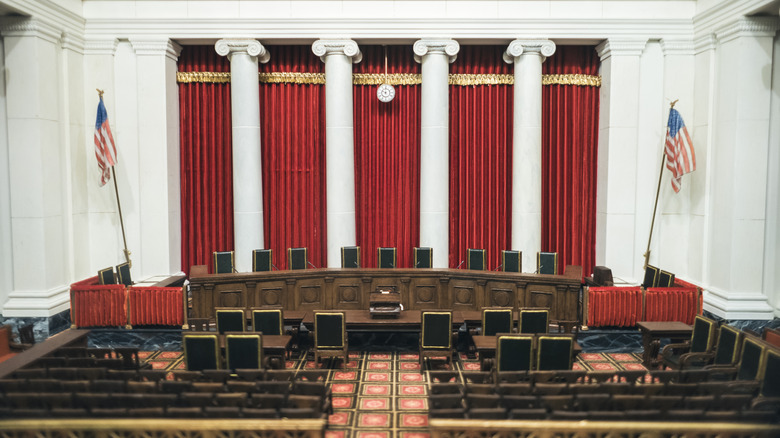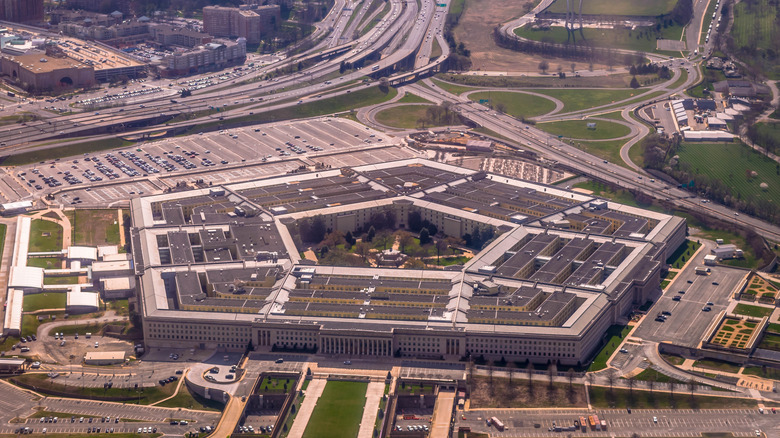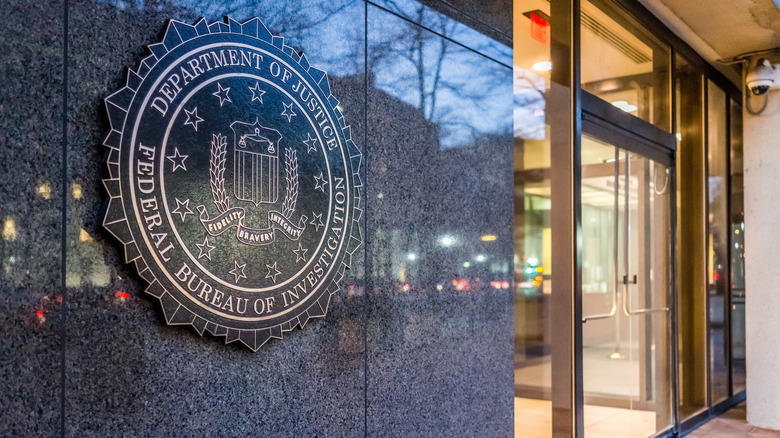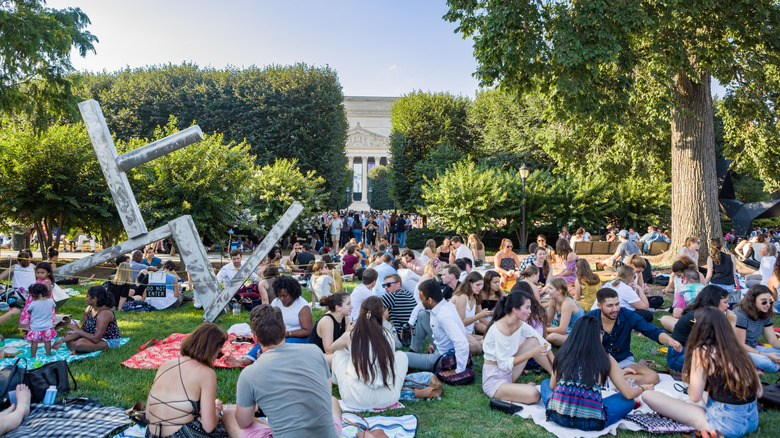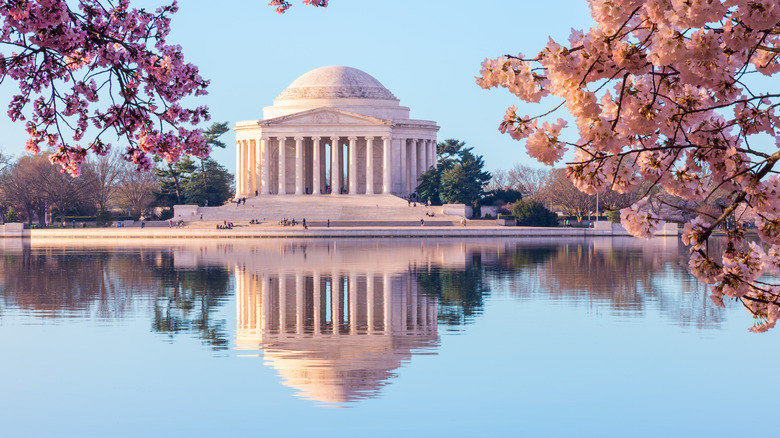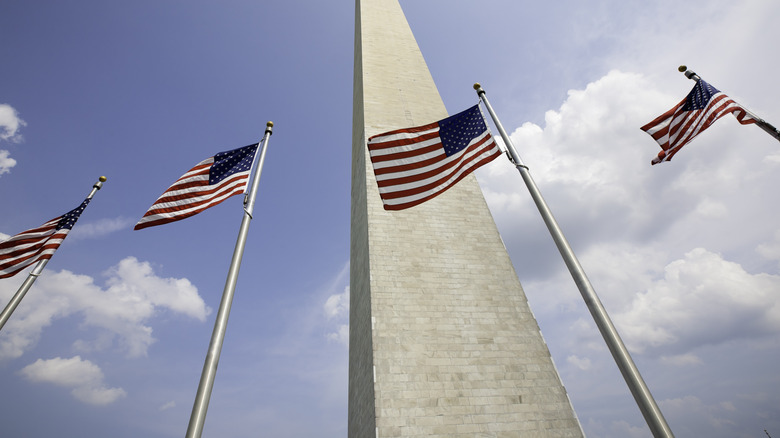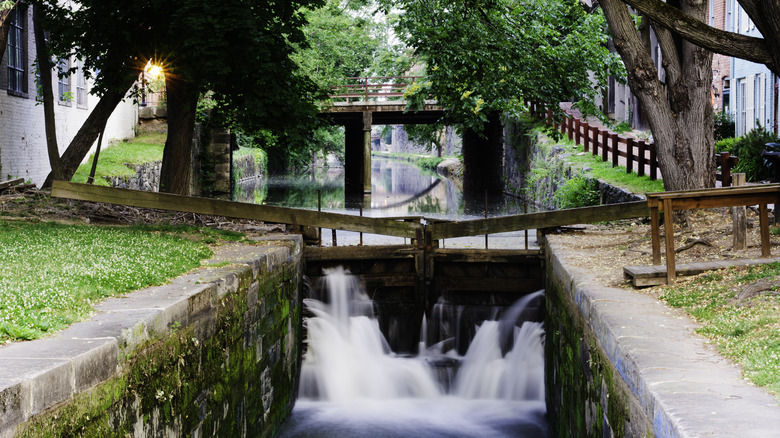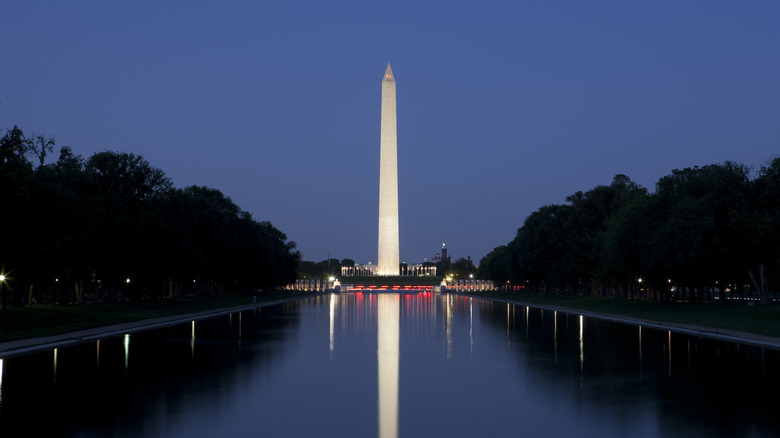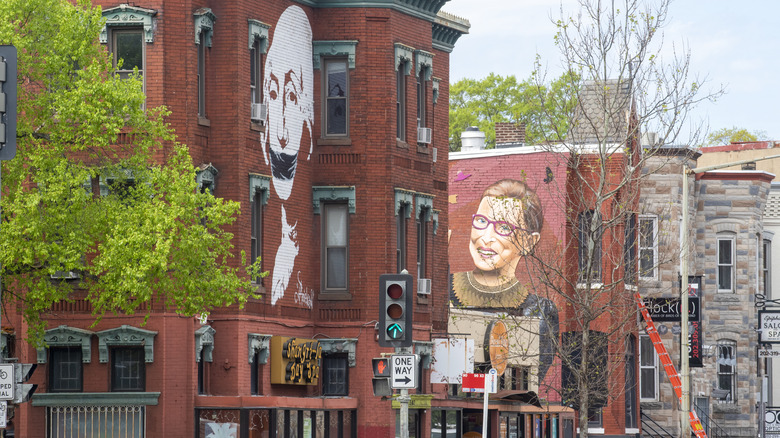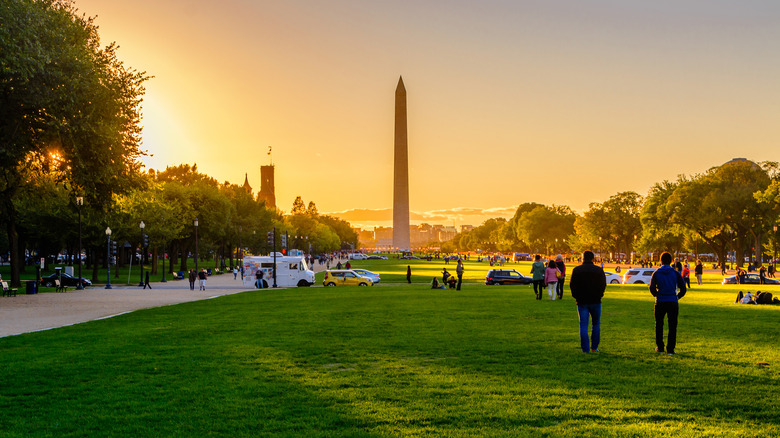Traveling On A Budget? Here Are 25 Fun, Free Things To Do In Washington, DC
The nation's capital is a vibrant hub of art, music, and culture — but it's also one of the country's most expensive cities. When you factor in transportation, hotels, and food, a visit to Washington, D.C. can get pricy fast, especially with a family. And then you've got the cost of entertaining everyone.
The good news is that D.C. is the No. 1 city in the country when it comes to free things to do. From government buildings and museums to concerts and outdoor activities, you could spend a few weeks in the capital and never run out of options. Here are some ideas to get you started — no wallet required.
Tour The White House
No trip to Washington, D.C. is complete without a visit to the White House. Available most mornings each week, the tour is self-led and takes about 45 minutes. You'll be able to see rooms open to the public in the East Wing, such as the Blue, Red, and Green Rooms, the State Dining Room, and the China Room. You'll also get a view of the Rose Garden. To tour the White House gardens, you have to attend the Garden Tour that happens either in the spring or fall.
White House tours are available on a first-come, first-served basis, and you must submit your request well in advance through your Member of Congress. You can find your Congressperson on the Congress.gov website.
Take a walking tour of the city
One of the best ways to see a city is on foot, especially when you have an experienced tour guide leading the way. DC by Foot offers "pay what you wish" tours, for which you are not obligated to pay anything (although a couple of dollars for a multi-hour tour seems fair if you've enjoyed it). There are several different tour options that lead you around all the top sights, including the National Mall, the Tidal Basin, Arlington Cemetery, Capitol Hill, Georgetown, and the U Street corridor.
Visit the Air and Space Museum
The National Air and Space Museum is part of the Smithsonian Institution, which comprises 21 free museums and the National Zoo. Be transported to the world of flight and space travel in this 161,145 square foot museum showcasing such wonders as the 1903 Wright Flyer, the Spirit of St. Louis, and the command module of the Apollo 11, "Columbia." You can also run your hands over a real moon rock. You can also attend a special evening event offered on specific dates of the year to view the night sky through a high-powered telescope in the museum's Public Observatory.
Spot a panda at the National Zoo
Fun for kids and adults alike, the National Zoo covers 163 acres in downtown Washington, D.C. It houses 2,100 animals, including some of the world's top endangered species. One of the most popular attractions is the Giant Panda enclosure where the current residents, Tian Tain, Xiao Qi Ji and Mei Xiang, entertain visitors by doing what pandas do — which is mostly eating and sleeping. Other can't-miss exhibits are the great cats, orangutans, and the children's petting farm adjacent to the Pizza Playground.
Go back in time at the National Museum of American History
History buffs won't want to miss the National Museum of American History. This expansive 750,000 square-foot building contains over 3 million treasures, including the original American Flag, the ruby slippers belonging to Dorothy in "The Wizard of Oz," and the top hat President Lincoln was wearing the night he was assassinated. Don't miss the "First Ladies" collection, which showcases items, such as dresses and china, belonging to the wives of our great (and not-so-great) American Presidents. Car fanatics will want to check out the "America on the Move" exhibit, which displays 340 artifacts of early automotive history, including the first car to drive coast to coast.
Marvel at the largest library in the world
Calling all bookworms: The Library of Congress is the world's largest library, boasting 838 miles of bookshelves and over 38 million books and printed materials. Even those who don't venerate books can muse over its 3.6 million recordings, 5.5 million maps, 14 million photographs, and 8.1 million pages of sheet music. For the little ones, there's the Children's Literature Center, which can provide access to more than half a million children's books, maps, visual and audio materials, and more. The Thomas Jefferson Building that houses the library is architecturally stunning — a fine example of the Beaux Arts style with its dramatic and ornamental touches.
Wander through the National Arboretum
There is no place better to spend a beautiful day in Washington, D.C. than the U.S. National Arboretum. Encompassing 446 acres in the Northeast quadrant of the city, it displays a comprehensive array of ornamental plants throughout its gardens and exhibits. A popular draw is the Gotelli Conifer Collection, which features conifers from around the world, intermingled with Japanese maples, ornamental grasses, and other seasonal plants and flowers.
Sit a spell in the shady gazebo before heading to the National Bonsai & Penjing Museum to view an assortment of stout, manicured Japanese and Chinese bonsai trees. Finally, stroll to the National Capitol Columns, a Stonehenge-like installation of 22 Corinthian columns that once provided support for the U.S. Capitol Building when it was constructed in the early 1800s.
Admire masterpieces at the National Gallery of Art
The second most popular museum in the U.S. (the MOMA in New York takes first place), the National Gallery of Art draws 43 million visitors each year. Within its walls, art lovers will find over 150,000 paintings, sculptures, photographs, prints, and decorative arts, which make up the permanent collection. Some of the most famous works on display include "The Boating Party" by Mary Cassatt, "Breezing Up (A Fair Wind)" by Winslow Homer, "The Houses of Parliament, Sunset" by Claude Monet, and "Ginevra de' Benci" by Leonardo da Vinci.
Check out the world's first voice-activated museum
Housed in the historic Franklin School in downtown D.C., Planet Word is the first voice-activated museum in the world, meant to inspire a newfound love of language and words, per the museum's website. It achieves this goal by bringing words to life — in many cases, larger than life — through its immersive exhibits that feature a talking tree, a 22-foot talking word wall, a unique library, and a karaoke room. You can also tell jokes in the humor gallery, paint the walls in Word Worlds, and deliver a famous speech with the help of a teleprompter. Entrance to the museum is free, but it's recommended to book your pass online in advance as day-of passes are sold on a first-come, first-served basis.
Explore the United States Botanic Garden
Across town from the Arboretum sits the smaller but no less worthwhile U.S. Botanic Garden, which is touted as one of the oldest public gardens that's been continuously operating in the United States, according to the website. Over 1 million people visit each year to view the garden and attend educational programs designed to promote sustainability and conservation. Exhibits change throughout the year. At the time of writing, agriculture is the star of the show in the "Cultivate: Growing Food in a Changing World" exhibit, which explores innovations in agriculture and the ways that cultivating and preparing food connects people and communities.
Walk the cobblestone streets of historic Georgetown
A National Historic Landmark included in the National Register of Historic Places, Georgetown is older than Washington, D.C. itself. Originally a tobacco port, today it's a bustling residential and commercial center. The main streets feature an eclectic mix of shops and restaurants, while the tree-lined side streets offer a quiet respite where you can stroll along the old cobblestone streets with their original trolley tracks (no longer in use).
Many of the upscale row houses date back to before the Revolution. Head uphill for views of the Potomac River, then take a detour to descend the dark and narrow stairs that were featured in the film "The Exorcist." You can also visit the beautiful grounds of Georgetown University and stroll along the waterfront promenade.
See the original Declaration of Independence and Constitution
The National Archives Museum is responsible for preserving United States government and historical records. Arguably, the most important documents it protects are the Charters of Freedom — the Declaration of Independence, the Constitution, and the Bill of Rights. The original parchment of these documents is understandably worn and faded, but they have been well cared for by archival experts, per the National Archives website, and they are currently on display for visitors to read and view. You can see the original signatures of the Founding Fathers, including Thomas Jefferson, Samuel Adams, John Hancock, and Benjamin Franklin.
Catch a performance at the Kennedy Center
Named after the 35th President in recognition of his work to advance the performing arts, the John F. Kennedy Center for the Performing Arts has been a thriving cultural center since it debuted in 1971. For more than four decades, it's presented world-class plays, musicals, orchestral productions, operas, and more from some of the world's greatest playwrights, composers, and performers.
Tickets to a show at the Kennedy Center don't come cheap, but you're in luck: There are free performances every Wednesday through Saturday at 6 p.m. on the Millennium Stage. Check out the Center's website for the full schedule. You can book ahead or get tickets at the door on a first-come, first-served basis.
Get out in nature at Rock Creek Park
Comprising 3,000 acres of land in Northwest and Northeast Washington, D.C., Rock Creek Park was officially founded in 1890 and is the third oldest National Park in the country to be designated by the federal government. Take a break from the tourist trail to get out in nature on one of its many trails that range in difficulty from easy to moderate.
A popular access point in the city is Pierce Mill, just north of the National Zoo and easily accessible on the DC Metro Red Line. From there you can hop on the popular Western Ridge Trail that's a moderate 9-mile hike taking about 3 hours and 45 minutes, on average.
Learn about elephants at the National Museum of Natural History
As you enter the Rotunda of the National Museum of Natural History, you'll immediately be greeted by Henry, a 13-foot-tall, 11-ton African elephant who's called the museum home since 1959. Henry is part of the museum's permanent African Bush Elephant exhibit aimed at educating visitors about elephant ecology, history, and the perils of poaching. A highlight of the exhibit includes actually being able to feel "elephant voices" — low-frequency vibrations that elephants use to communicate, which can travel up to 10 miles. You should also be sure to check out the museum's other exhibits, including the Butterfly Pavilion and "Eternal Life in Ancient Egypt" exhibit.
Sit in on an oral argument at the Supreme Court
Oral arguments are held for approximately 70 to 80 Supreme Court cases each year, and the public is invited to sit in on these sessions. During an oral argument, the Justices are able to ask the attorneys on either side direct questions, and the attorneys have the opportunity to address arguments of particular importance to their cases.
Supreme Court oral arguments are held from October through April on specific weekday mornings. You can check the schedule on the Oral Arguments Calendar. Each argument lasts an hour, and courtroom seating is available on a first-come, first-served basis.
Visit the world's largest office building (The Pentagon)
The world's biggest office building doesn't sound like it would be that fun to visit, but this is not your average office building. It's The Pentagon, the home of the U.S. Department of Defense. Sitting on 1,100 acres of land that was formerly a part of Confederate General Robert E. Lee's estate, it has 6,500,000 square feet of space, 7,754 windows, and 17.5 miles of hallways.
A guided tour through the Pentagon will give you a look behind the scenes of the massive facade. You must book your tour at least two weeks in advance, but it's recommended to do it even sooner as the spots fill up fast. Note that international visitors must contact their country's embassy to inquire about a tour.
Take the FBI Experience tour
If you want to get a sneak peek inside the heart of the nation's security organization, you'll have to plan in advance. You must request a visit from your state Congressperson or Senator no less than four weeks ahead of time — but not more than five months in advance. This 90-minute self-guided tour includes interactive multimedia exhibits and information about the history of the FBI. You'll also get to view some artifacts from famous cases. Active and retired FBI agents are usually present to provide visitors with additional information.
Attend a jazz concert in the Sculpture Garden
The National Gallery of Art Sculpture Garden is worth a visit any time of day or year. Set on six acres, it features a lush landscape and sculptures by famous artists like Marc Chagall and Joan Miro. But a visit on select Friday evenings in summer gets you more than just a stroll among art: You'll also get to enjoy a free jazz concert set against a beautiful backdrop. From 6 p.m. to 8:30 p.m., music lovers flock to the gardens with their blankets and a picnic to enjoy the (hopefully) fine weather and tunes. Because it's so popular, access is by lottery only, for which you must register the Monday prior to the concert. More information can be found on the National Gallery of Art's website.
Celebrate spring at the Cherry Blossom Festival
Visitors who arrive in the nation's capital in early spring are in for a treat. The famous cherry blossoms — originally a gift from the Japanese— bloom around the Tidal Basin in late March and early April. They're so beloved that there's even a website that predicts their arrival each year. The National Cherry Blossom Festival lasts for more than three weeks and includes a host of free events, including performances, parades, a kite festival, and a children's party. You can check the festival's website for a complete calendar of events and plan your visit to Washington, D.C. accordingly.
Take in the view from the Washington Monument
Those afraid of heights may want to skip a trip up to the top of the iconic Washington Monument that towers above the National Mall. Others shouldn't miss it. Opened in 1888, it was the tallest structure in the world at the time at 555 feet. Now visitors from around the world can take an elevator ride to the observation deck at 500 feet to get sweeping views of the city. Although the trip is free, only a limited number of people are allowed per day. You can get same-day tickers at the Washington Monument Lodge on 15th Street, or you can reserve them online for a $1 fee.
Stroll along the C&O Canal
The C&O canal extends 184.5 miles from Georgetown in downtown Washington, D.C. to Cumberland, Maryland. Finished in 1850, the canal was a means of transporting lumber, wheat, coal, and other large commodities —until it was destroyed by flooding in 1924. It lay dormant until a National Park was established around it in 1971. Today, the towpath that runs alongside the canal is a popular place for walkers, runners, and bikers. Stroll the pebbled pathway to unwind after sightseeing, and stop for a rest in one of the many grassy areas along the way.
See the monuments at night
Washington's monuments are beautiful by day, but you'll get a whole different view of them after dark when they're lit up against the night sky. Tips for Family Trips recommends planning to walk for about three hours to cover the three miles from monument to monument, so wear sturdy, comfortable footwear. Start at the Jefferson Memorial, then visit the other memorials in this order: Franklin Delano Roosevelt Memorial, Korean War Veterans Memorial, Lincoln Memorial, Vietnam Veterans Memorial, Washington Monument Memorial, World War II Memorial, and the Martin Luther King Memorial.
Explore the city's street art
The mission of MuralsDC, an organization established in 2007, is to beautify the city and replace Washington, D.C.'s illegal graffiti with attractive street art. With 89 murals around town, who needs to go to a gallery? Lace up your walking shoes and take a stroll following the interactive map. It's a great way to see the city and get familiar with some neighborhoods most tourists don't visit.
Have a picnic on the National Mall
By this point, you probably know that the National Mall is not a shopping mall. It's a large open grassy area that extends 2.5 miles between the White House, the Washington Monument, and the Lincoln Memorial. Walking the entire expanse will allow you to see some of the city's most popular sites, including museums, fountains, and gardens. When you're done, spread out a blanket and have a picnic. This isn't free, per se, but everyone's gotta eat. You can avoid overspending at expensive restaurants and food stands by packing your own food and enjoying a sunset and some great people-watching.
